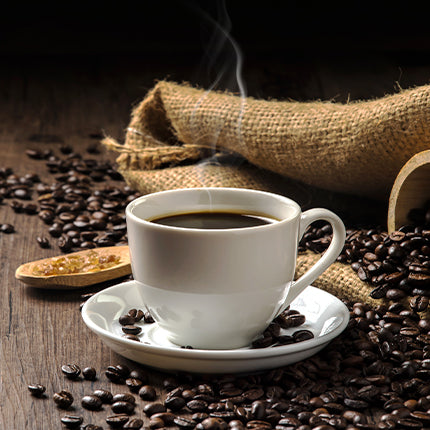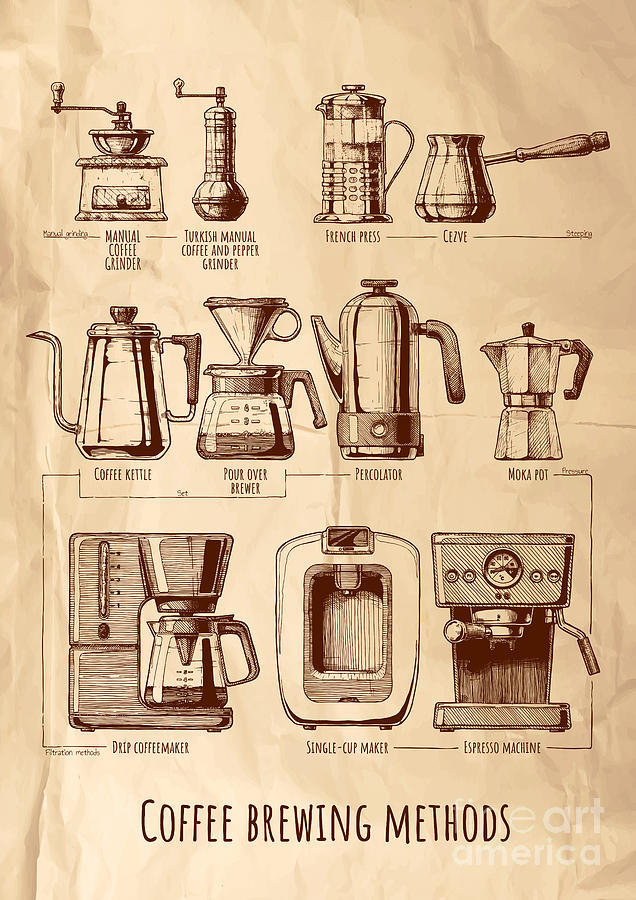Coffee Brewing Methods: Unlocking the Keys to the Perfect Cup in the house
Coffee Brewing Methods: Unlocking the Keys to the Perfect Cup in the house
Blog Article
Discovering the Art of Coffee Brewing: A Comprehensive Guide to Refining Your Mug
The art of coffee developing is a multifaceted technique that merges science with individual expression, where the choice of beans, water quality, and developing approaches merge to create a refined sensory experience. Understanding the subtleties of numerous coffee beans, specifically the differences between Arabica and Robusta, is necessary for any type of connoisseur.
Understanding Coffee Beans
To really appreciate the art of coffee developing, one should initially comprehend the fundamental aspect: coffee beans. These tiny seeds, generally stemmed from the Coffea plant, are critical in identifying the flavor account, scent, and general quality of the brewed drink. Coffee beans largely fall under two classifications: Arabica and Robusta. Arabica beans, understood for their fragile tastes and higher level of acidity, are typically preferred by aficionados. In comparison, Robusta beans have a stronger, a lot more bitter preference and greater high levels of caffeine content, making them ideal for espresso blends.

Furthermore, the handling approach-- whether cleaned, natural, or honey-- impacts the beans' last taste. Comprehending these elements permits makers to choose the ideal beans that straighten with their favored flavor account, inevitably enhancing the coffee developing experience. coffee brewing methods. This understanding is essential for anybody desiring grasp the craft of brewing the ideal mug of coffee
Brewing Approaches Explained
Numerous enthusiasts discover that the option of developing approach significantly impacts the final taste and aroma of their coffee. Each approach takes advantage of different extraction strategies, affecting the coffee's character and splendor.
Drip brewing, among the most prominent methods, uses a device to drip warm water via ground coffee, producing a consistent and tidy mug. French press, on the other hand, submerses coffee premises in warm water, enabling a fuller body and more robust flavor, as oils and fine particles stay in the brew.
Pour-over brewing offers a careful technique, where water is manually poured over coffee premises, permitting for accurate control over extraction time and temperature level, causing a nuanced and bright mug.
Coffee, a concentrated coffee brewed under stress, is recognized for its strong taste and velvety appearance, acting as the base for numerous coffee drinks, consisting of cappuccinos and lattes.
Important Devices Required
The foundation of any effective coffee brewing procedure exists in quality devices customized to your preferred method. A reputable coffee grinder is vital; fresh ground beans considerably enhance flavor and scent.
Following, consider your developing gadget. Alternatives vary from drip coffee machine and pour-over setups to French presses and coffee machines. Each method provides distinct flavor accounts and brewing methods, so choose one that lines up with your taste preferences.
An straight from the source exact scale is likewise indispensable, enabling you to determine coffee and water accurately, which is crucial for consistency. Furthermore, a thermometer can help monitor water temperature level, as it directly influences removal quality.
Learning Water Quality
The top quality of water made use of in brewing coffee plays a considerable duty in determining the final taste profile of the cup. Numerous elements add to water high quality, including mineral material, pH level, and general pureness. Preferably, water should be complimentary from pollutants and contaminants, as these can negatively affect the taste of coffee.
Minerals, such as calcium and magnesium, enhance the removal of flavors from the coffee premises, while keeping a balanced pH degree-- around 6.5 to 7.5-- is vital for optimal removal. Water that is also soft may cause under-extraction, causing sour or weak tastes, while overly difficult water can produce a bitter or severe cup.
For the best results, filtered water is suggested, as it reduces the presence of chlorine and various other undesirable substances often discovered in tap water. Furthermore, take into consideration utilizing water with a Complete Dissolved Solids (TDS) level in between 150-200 ppm, which is typically perfect for coffee brewing. By mastering water top quality, you see this page can lay a strong foundation for attaining a regularly exceptional mug of coffee, enabling the special features of your selected beans to beam through.

Tips for Taste Enhancement
Enhancing the flavor of your coffee can substantially boost your brewing experience and bring out the distinct subtleties of your picked beans. To accomplish this, consider a number of vital elements that influence taste.
To start with, the work size plays a critical duty. A finer grind increases extraction, leading to bolder tastes, while a coarser work returns a milder mug. coffee brewing methods. Adjust your grind according to your brewing method to achieve optimal outcomes
Second of all, experiment with mixture time. Over-extraction can cause anger, while under-extraction results in a sour taste. Go for a brew time that balances these extremes, typically between two to four mins, depending upon your technique.
Additionally, temperature is a crucial aspect. Developing with water that is also warm can burn the coffee, while water that is too amazing might fail to extract adequate taste. The ideal temperature variety is 195 ° F to 205 ° F(90 ° C to 96 ° C)
Final Thought) )))) In conclusion, the art of coffee developing is a multifaceted practice that needs a deep understanding of various aspects, consisting of bean option, brewing approaches, and water top quality. Proficiency of essential equipment and attention to detail in grind size, make time, and temperature level are critical for attaining optimum extraction. By integrating these components, coffee fanatics can elevate their brewing strategies, causing a mug that not only pleases personal preferences however additionally showcases the abundant intricacy of coffee flavors.
The art of coffee developing is a multifaceted technique that combines scientific research with personal expression, where the option of beans, water quality, and developing methods merge to create a polished sensory experience.To truly value the art of coffee developing, one should first recognize the fundamental component: coffee beans. Developing with water that is too warm can scorch the coffee, while water that is as well cool may fail to draw out ample taste. In final thought, the art of coffee Continue developing is a multifaceted practice that needs a deep understanding of different components, consisting of bean selection, brewing methods, and water high quality. By integrating these elements, coffee fanatics can boost their brewing strategies, resulting in a mug that not just satisfies personal choices yet also showcases the abundant intricacy of coffee tastes.
Report this page